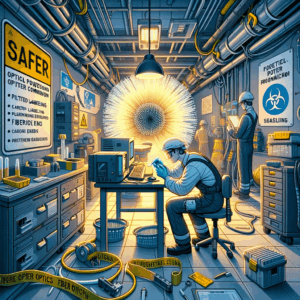Member Access Required
Join MapYourTech to access this exclusive content

Comprehensive Guide to Optical Power Safety in Fiber Optic Communications
- Access to premium courses and tutorials
- Professional networking resources
- Career development insights
- Expert-curated content library
Sign In or Create Account
Access this content by signing in to your existing account or creating a new free account.
Why Join MapYourTech?
MapYourTech is the premier learning platform for optical networking professionals. Our expert-curated content helps you advance your career in fiber optics, photonics, and optical networking technologies.
✨ Join thousands of professionals already advancing their careers with MapYourTech